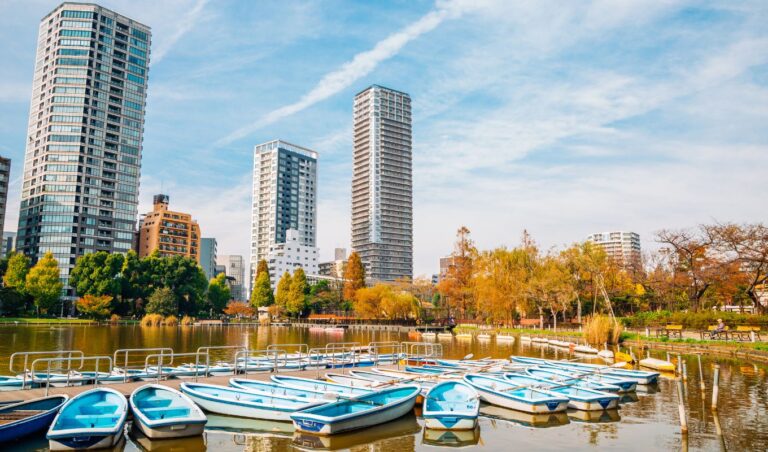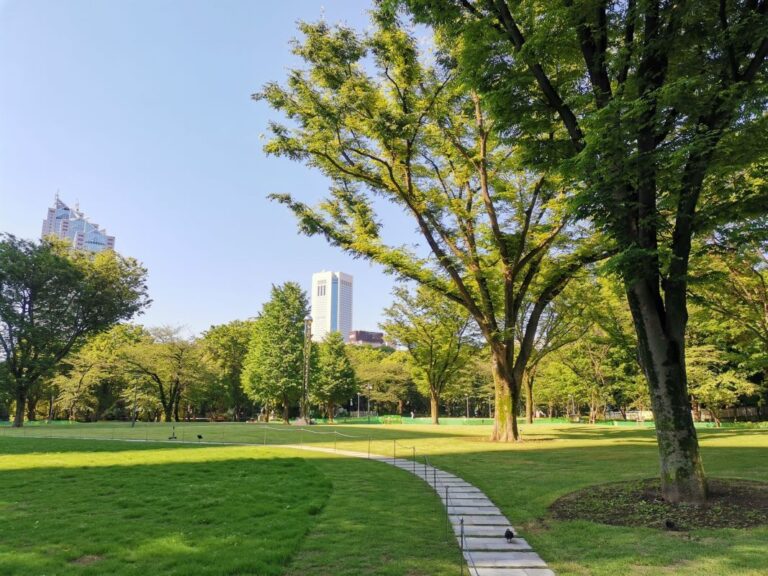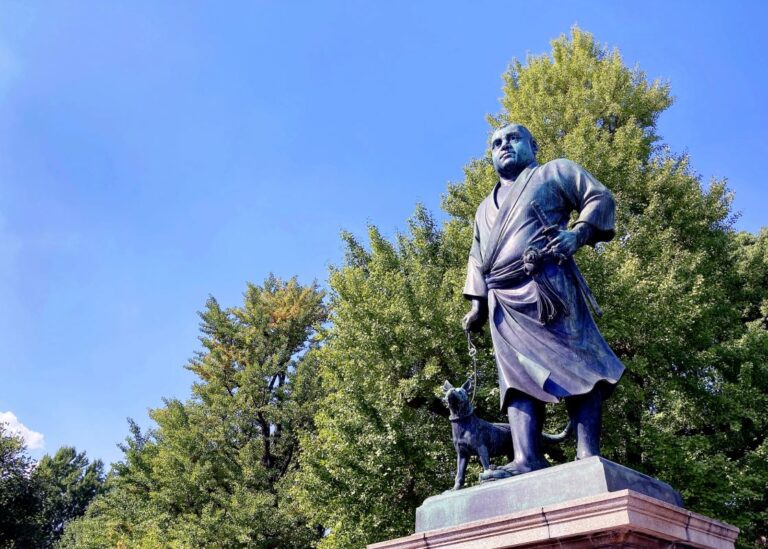Shin-Edogawa Park
In the late Edo period, it was a subordinate residence of the Hosokawa family, the lords of the Kumamoto domain. Later, it became the main residence of the Hosokawa family. The garden retains the appearance of a purely Japanese-style samurai garden of the Edo period in its simplicity. It is a garden with a circular fountain garden that makes use of the undulating landscape and emphasizes natural scenery. The building named “Shoseikaku” was built around 1887 and used to be a study hall of the Hosokawa family.
Address: 1-22 Mejirodai, Bunkyo-ku, Tokyo 03-3812-7111
Hours: 9:00 – 16:30 (9:00 – 16:30 from November to January)
Access: 10-minute walk from Edogawabashi Station on the Tokyo Metro Yurakucho Line
Admission: Free
URL:http://www.city.bunkyo.lg.jp/sosiki_busyo_kouen_annai_kuritukouen_kouen_shinedogawa.html
Mizumoto Park
This is the only park in Tokyo with a view of a water village. Mizumoto Kogai Tame (Tsurisen Sir): You can enjoy fishing. The park is famous for the famous judgment of Ooka Echizen-samurai, a famous Buddhist priest. Hana-Shobuen: One of the best iris gardens in the ward along with Horikiri-Shobuen. The iris festival is held every year in June. Seseragi Pond: You can enjoy playing in the shallow water up to your ankles. Sakura-dake” and “Poplar trees” for strolling, and “Central Square” and “Adventure Square” for relaxing.
Address: Mizumoto Park, Higashi-Kanemachi 5 and 8, Katsushika-ku, Tokyo 03-3607-8321
Hours: Open all day. Admission is also free
Access: From Kanamachi Station South Exit on the JR Joban Line or Kanamachi Station on the Keisei Line, take the Keisei Bus bound for Togasaki Sharyo (Togasaki Sharyo Bus Stop). 3 minute walk from the Suimoto Koen-mae Bus Stop, or from Kanamachi Station North Exit on the JR Joban Line, take the Keisei Bus bound for Ohba-gawa Suimon (Oba River Water Gate). 3 minute walk from the Suimoto Koen-mae Bus Stop.
Fee: Free of charge
url:http://www.katsushika-kanko.com/3_katsushika/3-6-1menu.html
Ueno Onshi Park
Ueno Park was designated as the first park in Japan along with Shiba, Asakusa, Fukagawa and Asukayama by a proclamation of the Grand Council of State in 1873. In the Edo period, this area was the precincts of Toeizan Kan’eiji Temple. After the Meiji Restoration, the land became government property, and in 1924 it was given to the City of Tokyo through the Ministry of the Imperial Household in order to be named “Onshi” (Imperial Gift). The park was originally a park centering on the Kan’eiji Temple, the mausoleum, Toshogu Shrine, and the cherry trees in the precincts, but later a museum, zoo, and art museum were built, and the park was transformed into a park with a rich cultural atmosphere.
Address:3 Ikenohata, Ueno Park, Taito-ku, Tokyo 03-3828-5644
Hours: 5:00 a.m. – 11:00 p.m. (No entry after hours)
Access: 2 min. walk from Ueno Station on the JR, Ginza and Hibiya Subway Lines 5 min. walk from “Ueno-okachimachi” station on Oedo line 1 min. walk from Keisei Ueno Station on the Keisei Line Parking lot (fee required)
Free of charge
url:http://www.ueno.or.jp/index3.htm






